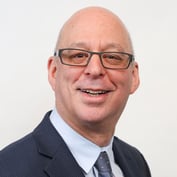What You Need to Know
- The Secure 2.0 Act delivered one of the biggest shifts in the retirement landscape in decades, especially for small-business owners and employees.
- Small-business owners are excited about new planning opportunities, but they are also often feeling overwhelmed.
- Advisors should bring a balanced approach to promoting new opportunities.
From the standpoint of advisor industry veteran Chad Larsen, the passage in late 2022 of the Setting Every Community Up for Retirement Enhancement (Secure) 2.0 Act represented a key milestone for the U.S. retirement planning industry.
Larsen is the retirement practice leader for HUB International’s intermountain region, a role he took on after HUB acquired his retirement-focused firm in 2019. As he pointed out in a recent discussion with ThinkAdvisor, there are well in excess of 100 distinct retirement-focused changes made by the Secure 2.0 Act, and while many of them are useful, the burden of digesting them all is a serious one.
Many of the law’s provisions will have a particularly notable impact on the work of financial planners and retirement plan advisors serving small-business owner clients. While he is excited to work with his clients on pursuing new opportunities, such as the implementation of new Starter 401(k)s or the adoption of in-plan income solutions, Larsen urged his fellow advisors to consider how easily overwhelming the scope of new opportunities can be.
“Many small-business owners wear many hats,” Larsen said. “I think many of them are finding the early discussions about Secure 2.0 to be a little bit overwhelming, to be honest. It is such an exciting time to be in the retirement world right now, but I think we need to keep in mind that many small business owners have a lot on their plate.”
This is especially true considering the broader discussions about economic instability and the shifting probability of a recession emerging this year, Larsen said. On the one hand, small-business owners are fighting to secure top talent and grow their revenues, but on the other, they are asking tough questions about expenses and operations. As a result, finding time to “talk retirement” in 2023 won’t necessarily be easy.
New Plan Tax Credits Are Key
Larsen feels one of the most useful provisions in the Secure 2.0 Act is the creation of more generous start-up tax credits as an incentive for smaller businesses to offer a retirement plan.
Before the passage of the new law, a three-year small business startup credit was available to offset up to 50% of administrative costs, with an annual cap of $5,000. The Secure 2.0 Act increased the startup credit from 50% to 100% for employers with up to 50 employees.
This provision is effective for taxable years beginning after December 31, 2022, Larsen said, meaning that business owners who either want to start a plan or who may be forced to start a plan in 2023 by their own state’s laws have a great opportunity to reduce the cost of doing so.
“Something to keep in mind is that, while the tax credits are really attractive, they are also somewhat complicated,” Larsen noted. “Another factor to consider is that there is still a fairly limited marketplace of providers who are highly active in the small-business 401(k) plan space.”
Advisors can help ease the burden by delivering their own tax expertise and by leveraging partnerships with certified public accountant and legal resources.









 February 07, 2023 at 03:18 PM
February 07, 2023 at 03:18 PM











